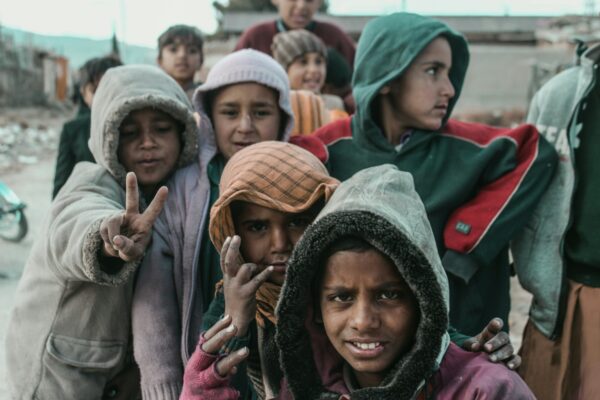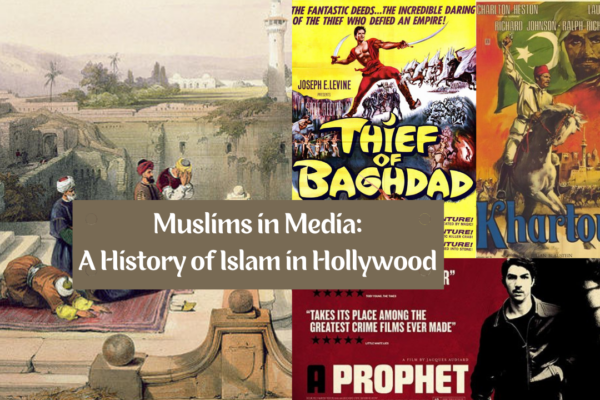If colonialism is characterized by the denial of independent personhood to the colonized, and the consequent desire to be accorded existence through the gaze of the colonizer, Khuda Ke Liye expresses an aspiration to be recognized as good in the War on Terror calculus.
Internalized Colonial Narratives in Pakistani Cinema: Liberalism, “Good Muslims,” and the War on Terror
If colonialism is characterized by the denial of independent personhood to the colonized, and the consequent desire to be accorded existence through the gaze of the colonizer, Khuda Ke Liye expresses an aspiration to be recognized as good in the War on Terror calculus.
This article was originally written for Ajam Media Collective by author Hamzah Saif. You can find the original article here.
If Zero Dark Thirty (2012) is the great American novel, it is made possible only by the gripping national anxiety that has pervaded American cinemascape since 9/11. An entire genre of cinematic production – from 24 (2001-2014) to Homeland (2011-) to Argo (2012) – reconstructs the national myth through a revival of cinematic orientalism. Its jingoist narrative, however, spills far beyond national borders. Those orientalized by the American screen consume these caricatures over their airwaves in Beirut, Tehran and Islamabad. And they are not silent in response.
Few countries are as stereotyped as Pakistan is, and some among the creators of its cinema offer rejoinders.
Much like the early productions of Pakistani cinema, which dealt with the experience of colonial partition, these films debate the meaning and experience of being Pakistani in the global War on Terror. Shoaib Mansoor’s 2007 Khuda Ke Liye represents perhaps Pakistani cinema’s most direct confrontation with the country’s myriad anxieties in the conflict.
The film grapples with religious intolerance in Pakistan, and the indiscriminate violence of a post 9/11, Islamophobic America. The film’s engagement with this sensitive subject matter made it widely popular among Pakistani cinema-goers and critics alike.
Released independently in a landscape dominated by industry productions, Khuda Ke Liye became Pakistan’s second-highest grossing movie, raking in a massive $10 million. However, it was also a deeply polarizing film.
Khuda Ke Liye met vociferous opposition from religio-nationalist groups, who, amid calls for its nationwide ban, mobilized two legal petitions to prevent the film’s release. They alleged that it was against Islamic values, and a conspiracy to disturb law and order in Pakistan.
But despite the film’s protests against domestic religio-conservatism and against Western violence, the film follows a familiar narrative of good and bad Muslim. The protagonists are America-friendly, socially liberal and feminist Muslims: they typify good Muslims. Their adversaries are anti-American, socially puritan, misogynist, and improperly Muslim: bad. And insofar as it portrays the failure of American violence to distinguish between good and bad Muslims, the film is a plea to recognize the former as American allies, and to spare them from militarism.
The film follows the story of two brothers who are urban, elite and musicians, attributes that the film uses to establish them as quintessentially liberal.
The younger, sensitive and malleable Sarmad, is captivated early in the movie by the religiosity of Maulana Tahiri, a glib theologian and a former arms runner for the CIA. Under the tutelage of Tahiri, in a misguided attempt to become more properly Muslim, Sarmad forswears his guitar for a beard, and his love songs for misogyny. Militant, anti-Western politics, delivered through the Islamic idiom by the villainous mullah, take over his searching mind. The bad Muslim captures the good.
Meanwhile, the older, more clear-headed Mansur, studying music in the United States, stays true to his liberal ways – conveyed through his passion for music and love of Janie, a white, non-Muslim woman – as he grapples with the paranoid jingoism of post-September 11th America. Keep a low profile, his parents warn over the phone.
In the immediate wake of 9-11, an anonymous white onlooker reports Mansur to the authorities as a terrorist. That night, Mansur is abducted by intimidating white officials. The good Muslim has been conflated with the bad one – the innocent imperial subject suffers the indiscriminate wrath of the empire.
Underscoring this inability to/indifference towards discriminating between good and bad Muslims, in captivity, Mansur’s protests of innocence meet unrelenting ridicule. His troubles are compounded by the cultural ignorance of his abductors, for whom every artifact of his Pakistani identity is proof of his guilt. Prolonged torture and humiliation follow, finally leading Mansur to transform proof of his innocence – cell walls lined with the words, “I love USA” – into angry rejectionism – “I love USAMA.”
Back in Pakistan, Sarmad’s conservative religiosity turns increasingly misogynist, climaxing when he abducts and forcibly marries his cousin Maryam. Holding Maryam captive in a tribal village, Sarmad frequently travels to the nearby Afghanistan-Pakistan border, and participates in an armed jihad against the forces of the Northern Alliance, whom his new beliefs condemn as pro-American and hence anti-Muslim. Maulana Tahiri’s sermons intersperse scenes of shootouts, underscoring that religiosity is fuelling Sarmad’s militarism.
As the film wraps up, Sarmad, realizing that Northern Alliance fighters too consider themselves Muslims, disavows jihad, and turns himself in to the law. Mansur, whom neither his liberalism nor love of a white American could save, is deported to Pakistan. Left deaf and mute from torture, Mansur is forever confined to a wheelchair. Maryam, rescued by the Pakistani military, takes her father and Sarmad to court.
A liberal – again, music-loving – imam, argues her case, and exposes Maulana Tahiri’s puritanical interpretations as irreconcilable with Islamic tradition and history. The film concludes with Maulana Tahiri’s militancy theologically invalidated, and the characters left to rebuild their lives after their encounters with the war.
The film laments the violence of the War on Terror, both of America’s militarism and of Islamic conservatism. Protesting America’s Islamophobia, it insists that many Pakistanis are pacifists. In denouncing those Pakistanis who engage in militancy, it finds them misogynist, fanatical puritans driven by shallow and incorrect interpretations of Islam.
This characterization abides closely by the War on Terror narrative of American liberals, who chastise the United States for its inability to see some Muslims as non-threatening, while also maintaining that some (bad) Muslims are driven by misinterpreted religion to violence.
In conformity to this, Khuda Ke Liye’s offers no criticism of terms such as ‘terrorist’ and ‘terrorism’, and no rejection of depictions of Pakistanis that champions Westernized Pakistanis as American allies, and conservatives as adversaries. Instead, its plot is centrally driven by the stereotypes that underpin the terrorist/innocent binary.
The enemy is misinterpretations of Islam (equals conservative equals misogynist equals anti-American) that are brainwashing impressionable minds. The savior is a music-aficionado, appropriately liberal in religion, and inherently America-friendly.
Real-world contradictions, such as the anti-imperial activism of famous Pakistani rock-stars, including legendary Ali Azmat, or the pacifist protests against suicide bombings of Sunni Tehreek, a major religious organization, find no mention in Khuda Ke Liye’s narrative. The film’s story is also not complicated by findings that assert that religious conservatism/liberalism is no determinant of militancy in Pakistan.
Historical perspectives are similarly absent, as it ignores accounts that indict imperial policies (both American and Pakistani) in transforming a latent, fringe political philosophy into an active militancy. The sole mention of imperial politics comes from the villainous Maulana Tahiri, whose allusion to US backing of the Taliban in the 1980s comes across as more of an excuse for militarism rather than historical fact.
As a cultural production with a decidedly liberal agenda, Khuda Ke Liye’s failure to challenge the conflation of Islamic religious conservatism with misogyny and anti-Americanism, and the converse equation of liberalism with feminism and pacifism vis-à-vis the U.S., highlights an internalization of the War on Terror narrative among many Pakistani liberals. Similarly, the crescendo of right-wing protests against the film underscores the narrative’s reproduction by the political religious right.
If, for the religious right, authentic Pakistaniness in the War on Terror is to be reached through the rejection of Western (however construed) influence, then for the liberals, the liberalism of imperial centers represents a goal to be achieved. Thus, for both, even domestic productions are dictated by the logic of appealing to internalized colonial sentiments. Both the right and the liberals, in the words of Fanon, “appeal to the other [colonizer] so that his liberating gaze… would put me back in the world.”
Khuda Ke Liye’s deployment of historically inaccurate tropes to buttress its characters gives insight to the depth of the film’s appropriation of the imperial discourse in the War on Terror.
The film’s historical revisionism confirms Western liberals’ stereotype that Muslim cultural traditionalism is synonymous with puritanical intolerance. Contemporary militant puritanism’s invocation of tradition to legitimize itself thus finds unquestioned validation in the film’s liberal characters, who fully accept the dialectic. Instead of challenging the false association of tradition with puritanism – historically inaccurate given the former’s relatively recent and politically-contingent rise (variously under colonialism, and the Cold War) – the film’s liberals argue for a change in tradition.
For example, in a crucial scene, when Sarmad demands that his mother cover her head, the family’s grandmother interjects to inform that purdah was ubiquitous in her youth. Without qualification, one is left to assume that that observance of purdah was historically a priority for all Muslims. In fact, purdah in colonial India remained the province of elite women, and its observance was a deep marker of class. A verse by the popular 20th century Urdu poet, Akbar Allahabadi, a sharif Muslim (Muslim nobility), captures the centrality of class to purdah:
“Be-purdah nazar aain jo chand beebian / Akbar zameen mein ghairat-e-qaumi se garh gaya
Upon seeing some elite women without purdah / Akbar was rooted to the ground in shame for his people
(qaum lit. people, at the time was a popular collective noun for Muslim nobility)”
When class is discussed in the film, it cleaves closely to popular stereotypes of militants as poor and uneducated, and of the rich as ‘modern’ and liberal. Maulana Tahiri, whose humble origins are established early, criticizes liberal and pacifist Islamic interpretations as evidence of the indolence and moral corruption of the richer class. The poor, in his formulation, are the real mujahids – establishing senseless violence as a malady of the poor.
Of course, studies consistently reject this caricature; support for anti-American militancy is stronger among the middle class in Pakistan. Similarly, reproducing stereotypes of Muslim militants as driven primarily by religious ideology, Mansur establishes his pacifism by emphasizing his distance from faith: “to kill someone you really have to be a die-hard religious fanatic, and that I am not.”
If colonialism is characterized by the denial of independent personhood to the colonized, and the consequent desire to be accorded existence through the gaze of the colonizer, Khuda Ke Liye expresses an aspiration to be recognized as good in the War on Terror calculus. If Zero Dark Thirty and its genre demonize Pakistanis, Khuda Ke Liye responds that not all Pakistanis are demons.
Instead of offering rebuke to the ideological colonialism of the War on Terror, the film remains firmly rooted within the war’s good and bad Muslim framework. In Mansur’s undeserved capture and torture, it laments that imperial power cannot distinguish between allies and adversaries.
Recognize me as liberal like you, the film seems to plead, and spare me, the good Muslim, for I too am in battle with the bad one.





